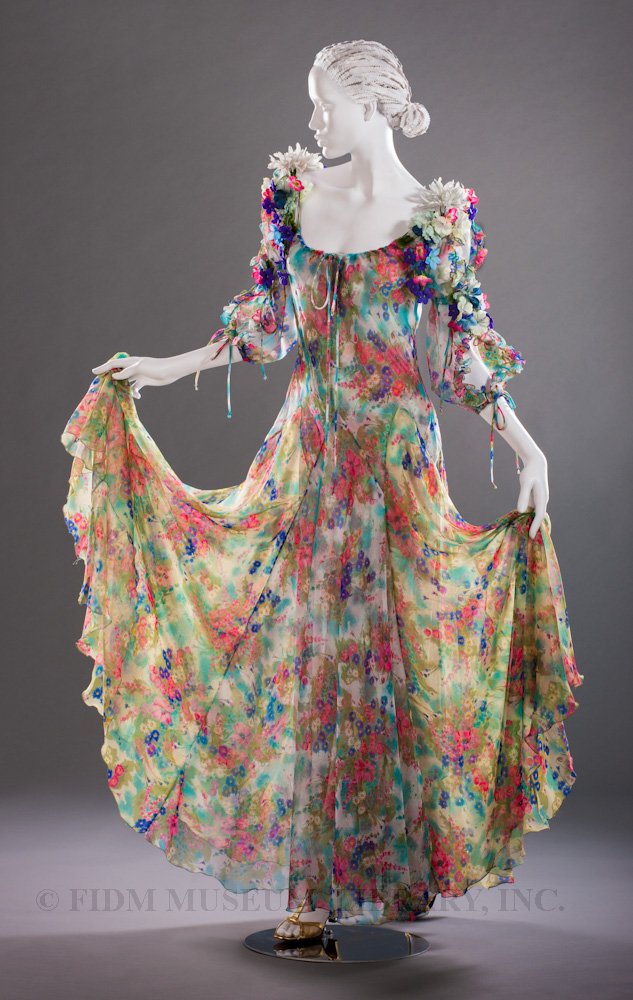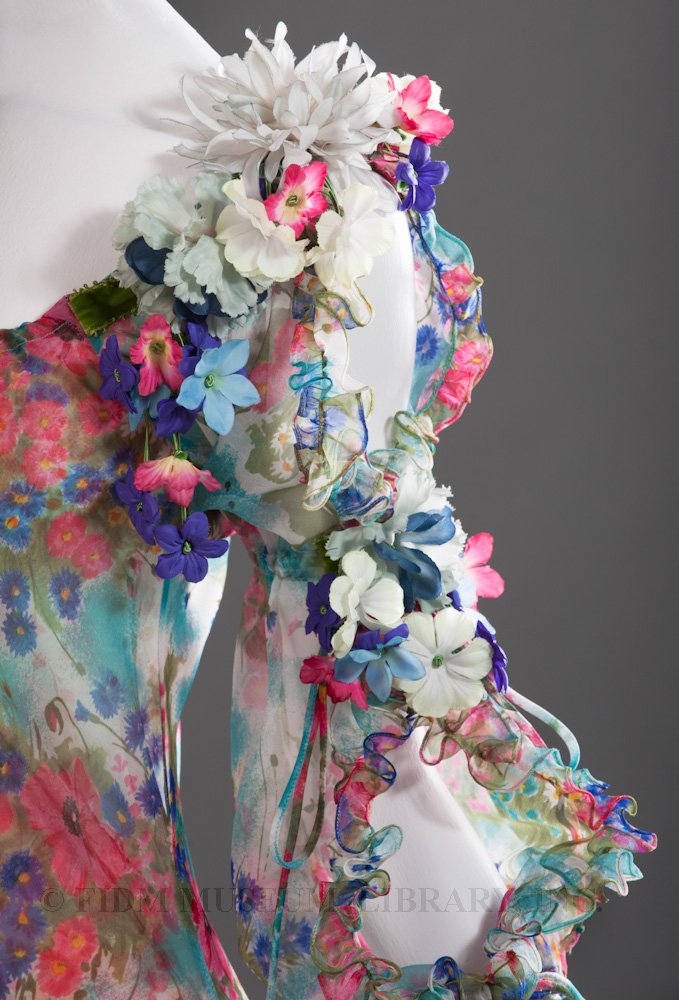Sant' Angelo chiffon dress, c. 1968-1972

Giorgio di Sant’ Angelo
c. 1968-1972
Printed polyester chiffon, silk flowers
Gift of Anonymous Donor
95.40.3
Giorgio di Sant' Angelo's (1933-1989) exuberant aesthetic was informed by a variety of historic and cultural references. His 1969 Klimt dress, a fantasy of patchwork and velvet, was inspired by Gustav Klimt's 1907 painting of Adele Bloch-Bauer, which was itself informed by Byzantine mosaics. In 1970, Sant' Angelo presented a collection of fantasy Native American dress, including a white doe-skin wedding gown and a black velvet skirt trimmed with raccoon tails. That same year, the designer offered a gypsy collection filled with layered, multi-colored skirts and off-the-shoulder ruffled blouses in a riot of prints, patterns, and colors.
In designing the flower printed dress pictured here, Sant' Angelo looked to European art history, specifically, the 15th century Renaissance painter Sandro Botticelli. In Botticelli's allegorical painting La Primavera (1477-82), Flora, the goddess of flowers and a symbol of spring, wears a flower-patterned dress trimmed with leaves and flowers. A floral crown decorates her flowing blond hair. Barefoot and staring at the viewer, she tosses flowers before her as she walks through the forest. Sant' Angelo's dress uses inset bias panels, a ruffled lettuce hem and dimensional floral embellishment to create an Age of Aquarius tribute to Botticelli's Renaissance Flora. Sant' Angelo's dress also makes a cultural connection between these two distinct eras—both the Age of Aquarius and the Renaissance were considered the dawn of a new age and a new culture.
Sant' Angelo's career coincided with an especially unrestricted time in fashion. In the late 1960s and early 1970s, Vogue featured a staggering array of styles. The stylish wardrobe included bits and bobs picked up during international travels, or designs inspired by other cultures. In 1970, Vogue featured designs by Sant’ Angelo alongside a "brilliant lacquer-red printed cotton, embroidered bodice midi dress from Afghanistan" and a bone, cow horn, and rawhide necklace made by Chippewa Indians.1 Both the Afghani dress and the Chippewa necklace could be purchased in New York City. Fashion was truly about incorporating personally inspiring odds and ends rather than purchasing the latest off-the-rack ensemble with accessories included.
1 "Vogue's Own Boutique" Vogue (Jul 1, 1970) 128.
